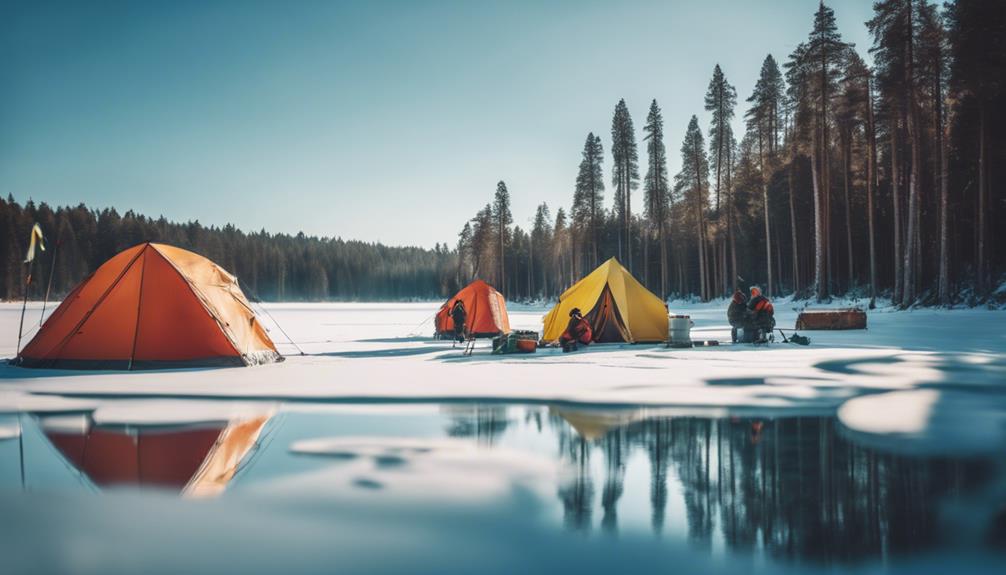Introduction to Fly Fishing in West Virginia
Fly fishing in West Virginia is a captivating experience that draws anglers from all over the United States. With its stunning landscapes, clean rivers, and abundant fish species, West Virginia offers some of the best fly fishing opportunities in the country. Whether you’re a seasoned angler or a beginner looking to learn the ropes, this guide will provide you with all the essential information about fly fishing in this beautiful state. From the best locations to tips on technique, we’ll cover everything you need to know to make your fly fishing adventure in West Virginia a memorable one.
Best Locations for Fly Fishing in West Virginia
When it comes to fly fishing in West Virginia, certain locations stand out for their exceptional beauty and fishing potential. Some of the best spots include the Cranberry River, the Elk River, and the Cheat River. The Cranberry River is renowned for its wild trout population, making it a prime spot for fly anglers seeking a challenge. The Elk River offers fantastic opportunities for catching both rainbow and brown trout, while the Cheat River is known for its scenic beauty and diverse aquatic life. Exploring these rivers will provide you with a chance to connect with nature and enjoy the thrill of reeling in a big catch.
Understanding the Best Times for Fly Fishing
Timing is crucial when it comes to successful fly fishing in West Virginia. The best times to fish generally fall during the spring and fall months when water temperatures are ideal for trout activity. In spring, as the snow melts and water levels rise, fish become more active and feeding patterns increase. Fall, on the other hand, brings cooler temperatures that trigger trout to feed aggressively in preparation for winter. Additionally, early mornings and late evenings are often the most productive times for fishing, as fish are more likely to be on the hunt for food during these hours.
Essential Gear for Fly Fishing in West Virginia
To make the most of your fly fishing experience in West Virginia, having the right gear is essential. A good-quality fly rod and reel are fundamental, along with a selection of flies that mimic local insect life. Depending on the time of year and the specific river, patterns like woolly buggers, dry flies, and nymphs can be highly effective. Don’t forget to bring along a sturdy wading staff, polarized sunglasses, and appropriate clothing for varying weather conditions. Having the right equipment not only enhances your fishing experience but also ensures your safety while navigating the rivers.
Fly Fishing Techniques to Master
Mastering various fly fishing techniques can significantly improve your chances of success in West Virginia’s waters. Casting techniques such as the overhead cast, roll cast, and double haul are essential skills to develop. Additionally, understanding how to read the water can help you identify the best spots for casting your line. Fish often seek shelter in areas with structure, such as rocks, fallen trees, or deep pools. Learning to present your fly in a natural manner is also crucial; this often involves using techniques like mending and drag-free drifts to make your fly look as lifelike as possible.
Regulations and Conservation Efforts
Before heading out for fly fishing in West Virginia, it’s important to familiarize yourself with local regulations and conservation efforts. The West Virginia Division of Natural Resources manages fishing licenses, seasons, and catch limits to ensure sustainable fishing practices. Many rivers have specific regulations in place, including designated catch-and-release areas that help preserve fish populations. By adhering to these regulations and practicing responsible fishing, you can contribute to the conservation of West Virginia’s natural resources and ensure that future generations can also enjoy the thrill of fly fishing.
Fly Fishing Guides and Resources
For those new to fly fishing or seeking to enhance their skills, hiring a local guide can be a game-changer. Experienced guides in West Virginia have extensive knowledge of the rivers, fish patterns, and the best techniques to use. They can provide invaluable insights that can help you improve your skills and potentially increase your catch rate. Additionally, numerous online resources, books, and local fly fishing clubs can offer support and community for anglers of all levels. Engaging with these resources can deepen your appreciation for the sport and improve your fishing abilities.
Final Thoughts: Embrace the Fly Fishing Experience in West Virginia
Fly fishing in West Virginia is more than just a hobby; it’s an opportunity to connect with nature, unwind, and experience the thrill of the catch. With its breathtaking scenery, rich biodiversity, and a variety of fishing locations, West Virginia stands out as a premier destination for anglers. Whether you’re exploring the tranquil waters of the Cranberry River or casting a line in the Cheat River, each fishing trip can lead to unique experiences and cherished memories. So grab your gear, embrace the adventure, and get ready to discover the beauty of fly fishing in West Virginia!
—
By following the guidelines in this comprehensive blog post, you can ensure that your content is both informative and optimized for search engines. Incorporating relevant keywords, structured headings, and valuable information will help attract readers interested in fly fishing in West Virginia and enhance their overall experience. Happy fishing!
